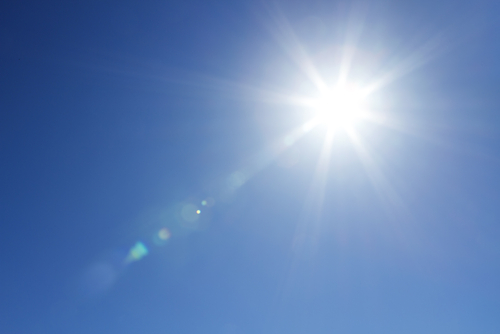Met Office figures show that, with a mean temperature of 17°C, July 2013 was the third warmest in the national record going back to 1910, behind 2006 (17.8°C) and 1983 (17.3°C).
July 2013’s heatwave was more notable for its duration than its intensity, although it is not particularly unusual in a historical context. The last year in which 30°C was not recorded at any station was in 1993. However, this July stands out in contrast to the run of unsettled summers from 2007 to 2012, and was the most significant UK heatwave since July 2006.
Through the month we saw high pressure sitting over the UK bringing a prolonged period of high temperatures between Saturday 6 July and Thursday 24 July, when a maximum of 28 °C was recorded at one or more locations on each of those 19 days.
The last time the UK saw such a long period of hot weather was August 1997, which also had a 19- day run of high temperatures. The highest temperature for July 2013 was recorded jointly at Heathrow and Northolt on 22 July (33.5 °C). (Although this high temperature has already been surpassed in August, with 34.1 °C recorded at Heathrow on 1 August.
July 2006 still stands as the hottest month on record in the UK with a mean temperature of 17.8 °C and also saw the record July temperature of 36.5 °C at Wisley (19 July 2006).
The heatwave broke on 22 July with thunder and some very heavy downpours. The wettest day in July was in Cumbria, when 79.8mm of rain fell at Carlisle on 28 July (97.4 mm on a 48 hour rainfall total between 0900 GMT 27 July to GMT 29 July 2013).
Looking at the individual countries, the hottest day in Scotland was on 20 July (30.5 °C) at Glenlee, with Castlederg in Northern Ireland and Porthmadog in Wales recording their highest temperatures on 19 July (30.1 °C and 31.4 °C respectively). England’s hottest day was also the aforementioned UK’s hottest day (33.5 °C on 22 July Heathrow and Northolt).
July’s UK rainfall total was 64mm, with Scotland receiving near normal levels at 83.1 mm and the whole of England drier than average at 52.3 mm (but with Northern England registering above average rainfall with 75.8 mm and Southern England below average at 39.8 mm). Wales (58.0 mm) and Northern Ireland (78.2 mm) were slightly drier than average.
Click here for a 14-day weather forecast and see what the rest of August has in store for us.
© Met Office






